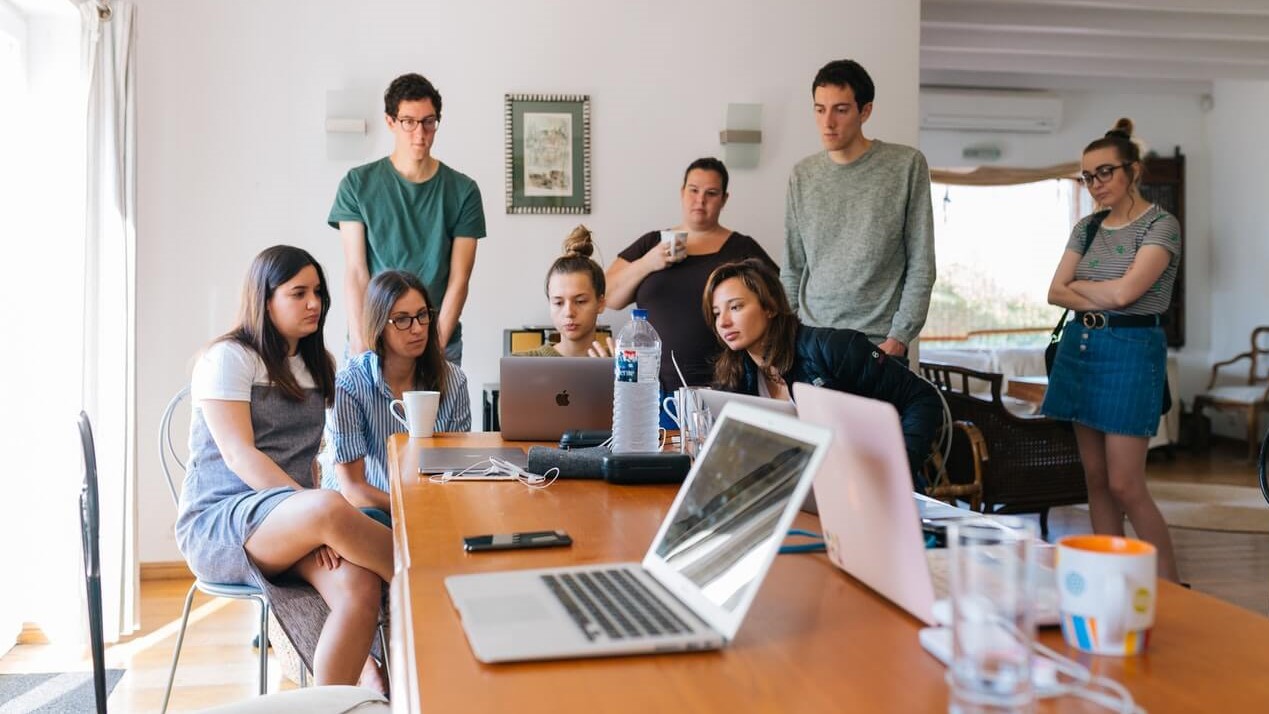Many students come to the U.S. with the hopes of getting a solid education while also working part-time to afford the school expenses. If you’ve wondered, can international students work in the USA and what job opportunities for international students are available; we’re here to help you answer these questions.
So, can you work with a student visa? Yes, and here’s how.
Job Opportunities for International Students in the USA
 If you’re searching for a job while studying abroad in the U.S., you have a few options on how you can go about it. Although you can work as an international student in the USA, there are still some restrictions, and you should first consult with your immigration attorney about F1 Visa restrictions.
If you’re searching for a job while studying abroad in the U.S., you have a few options on how you can go about it. Although you can work as an international student in the USA, there are still some restrictions, and you should first consult with your immigration attorney about F1 Visa restrictions.
Having said that, here are the job opportunities for international students who have an F1 Visa.
On-Campus Employment
On-campus employment is the safest and most permitted option when it comes to working as an international student in the U.S. It’s the only kind of employment that you can have during the first year of your studies. Focusing on on-campus work may seem challenging (and often will be) because universities tend to have limited employment opportunities on campus.
Everyone with a valid F1 visa status is eligible to apply for on-campus employment and can work up to 20 hours per week whereas, during vacation days or holidays, they can work full-time.
Optional Practical Training (OPT)
OPT refers to off-campus work during and after the completion of a degree. However, a student can only apply for OPT after being enrolled for a minimum of nine months. To obtain this kind of work you must have an Employment Authorization Document (EAD), for which you apply in the U.S. Citizenship and Immigration Service (USCIS), and authorization from your school’s International Student Office. Although you don’t need a job offer to apply for OPT, you should apply early as it could take USCIS up to 90 days to process your application.
Some general OPT requirements include:
- A lawful F1 visa status
- Employment must be directly related to the student’s major
- Students who engage in 12 months or more in Curricular Practical Training (CPT) full-time are not eligible
- Students must apply before full degree program completion
- OPT is permitted for up to 12 months full-time in total
- It is only available for students enrolled in STEM-designated programs
Curricular Practical Training (CPT)
CPT refers to off-campus work for F1 students, when it is an integral part of their curriculum. To qualify for such CPT it must be required and you must receive academic credit for; however, CPT can be paid employment. You will also need prior authorization from your school’s International Students Office and the USCIS must be notified. Your authorization is only eligible for a specific workplace, set dates, and pre-dictated full-time or part-time (students still completing their degree program are only eligible to work part-time). CPT doesn’t have a time limit, but you can’t start working until after being enrolled at a university for a full year.
Some general CPT requirements include:
- A lawful F1 visa status
- You must have a qualified job offer before applying
- CPT employment must be an integral part of your curriculum
- The job offer must be in your area of study
Severe Economic Hardship
Severe economic hardship work is available to anyone deemed in such a position by USCIS. Work is allowed part-time (20 hours a week) while school is still in session and can work during breaks. Students can only apply after being enrolled at a university for at least nine months. Similar to OPT, you must apply for EAD, which can take up to 12 weeks to be processed. After that, you may work anywhere in the U.S.
To be eligible for severe economic hardship, a student must meet the following criteria:
- A lawful F1 visa status
- Evidence of unforeseen economic hardship
- A good academic standing
- Proof that on-campus work is unavailable/insufficient
Employment with an International Organization
Similar to OPT, CPT, and severe economic hardship work, you can get employed by a recognized international organization. This kind of employment is often overlooked since it doesn’t have the universal application that CPT and OPT do. However, such employment doesn’t need to be required by your university and it won’t take away from your OPT employment opportunity. Only students that have a job offer ready from such institutions paired with a sponsorship qualify for OPT employment and students must be enrolled at a university for a full academic year.
Some general requirements for working with an international organization include:
- Students must have good academic standing
- A lawful F1 status
- Students must have an internship/ employment with a recognized international organization
- Employment must be within the student’s field of study and the organization’s sponsorship scope
How to Find a Job in the USA for International Students
 Finding a job in the U.S. as an international student isn’t an easy task. There are quite a few restrictions and limitations, but if you work closely with your International Student Office, you will find that you can actually make it. Before that, here are a few steps you can follow to speed things up.
Finding a job in the U.S. as an international student isn’t an easy task. There are quite a few restrictions and limitations, but if you work closely with your International Student Office, you will find that you can actually make it. Before that, here are a few steps you can follow to speed things up.
Start the hunt early
Consider what kind of job/internship you want to apply for before you can even apply for it. Start searching for opportunities early on, as authorizations can take months to go through and that can set you back unnecessarily.
Consider your school’s resources
Always consult your International Student Office at school for work. They can help you not only find work opportunities on-campus but guide you through the processes and applications that you will need for off-campus work. Also, attend different fairs, talk to recruiters, ask other fellow students about their experiences, etc.
Have your CV ready
Make sure that you have an updated CV and a ready cover letter that can be fixed with little personalization. It’s always important to have such things ready in case an opportunity pops up. It’s the CV/resume that catches the employer’s eye, so make sure it’s top-notch.
Network
Many jobs are found through solid connections you develop at school and events. Make sure that you’re doing a fair share of networking with your peers, professors, and alumni groups that have already gone through the process. You can also set up a LinkedIn account and grow your network online. The important part is that you get to know people with similar interests.
Can International Students Work in the USA After Graduation?
 The short answer is, yes. However, there are rules, regulations, deadlines, and a lot of details immersed in the whole process. Your first option could be the OPT program which offers 12 months of work to F1 visa students who have completed a level of higher education studies. For instance, after obtaining your bachelor’s degree, you will be allowed to work 12 months full-time, and if you go on to complete a master’s program, you will be allowed to work another 12 months.
The short answer is, yes. However, there are rules, regulations, deadlines, and a lot of details immersed in the whole process. Your first option could be the OPT program which offers 12 months of work to F1 visa students who have completed a level of higher education studies. For instance, after obtaining your bachelor’s degree, you will be allowed to work 12 months full-time, and if you go on to complete a master’s program, you will be allowed to work another 12 months.
Another way to get a job post-graduation is to apply for H-1B Specialty Occupations status. This will allow you to work for up to three years in a high-skilled occupation. If you obtain such permission, you can then extend that period into another three years upon completion of the primary three.
There are various job opportunities for international students in the USA, and although finding them isn’t the easiest job, having one on your resume can get you far. We hope this helped you understand how to find a job while studying abroad in the U.S. Good luck in both your studies and work!
